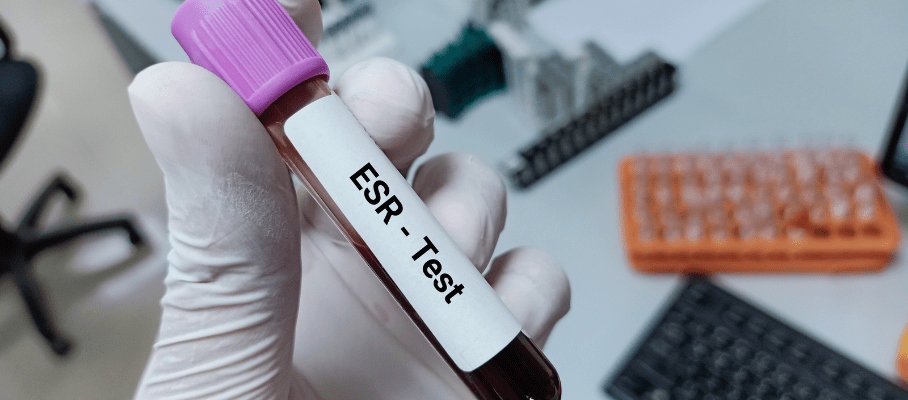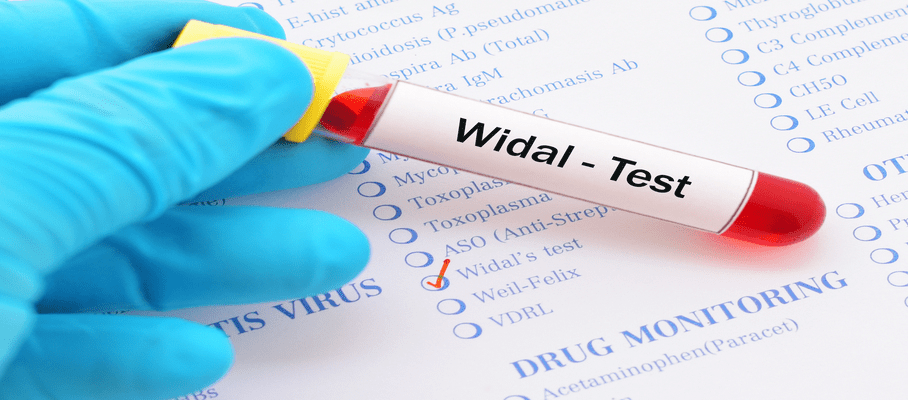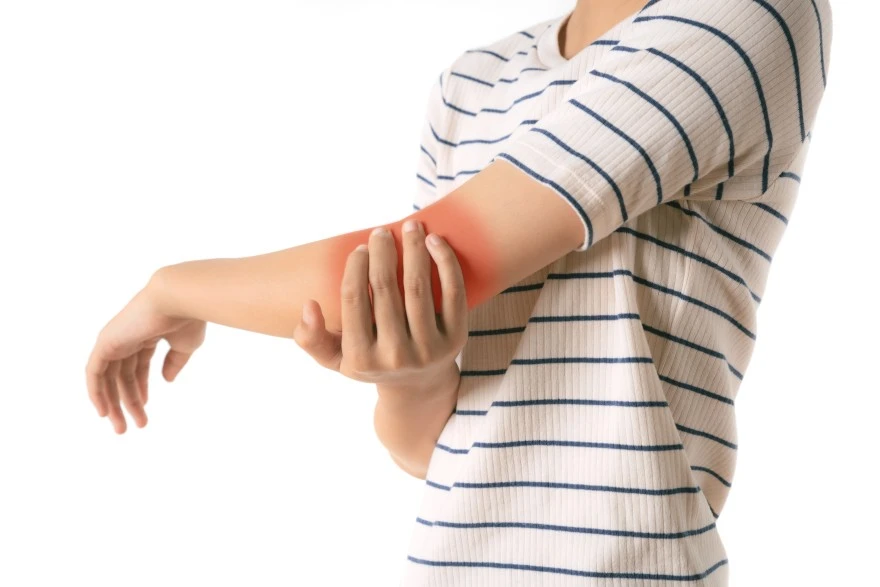Preventive Healthcare
Cold Sore: Causes, Symptoms, and Effective Treatments
1749825446.webp)
Table of Contents
- What is a Cold Sore?
- What are Cold Sore Symptoms?
- Possible Complications in Children
- What are the Cold Sore Stages?
- Causes of Cold Sores
- Are Cold Sores Contagious?
- How Long Are Cold Sores Contagious?
- Treatment
- Lifestyle and Home Remedies
- Alternative Medicine
- Cold Sore Vs. Canker Sore — What’s The Difference?
- Conclusion
- FAQs
Cold sores can feel frustrating and uncomfortable, especially when they appear at the worst possible time. You might notice a tingling or burning sensation around your lips before a small blister forms. These sores are caused by a common virus and often clear up on their own.
Understanding what triggers them, how they progress, and what helps manage them can ease your worries. With the right knowledge and care, you can feel more confident in handling cold sores whenever they appear.
What is a Cold Sore?
A cold sore is a small blister that usually appears on or around your lips, caused by the herpes simplex virus (HSV). These blisters are often filled with fluid and can be painful or itchy. They tend to go through several stages, from tingling and redness to crusting over and healing.
Also Read: Herpes Simplex Virus (HSV) Test: Types, Uses, Procedure & Result
Though cold sores can be uncomfortable and make you self-conscious, they are a common and manageable condition. A cold sore refers to a recurring viral infection, which can stay dormant in your body and reactivate at any time.
What are Cold Sore Symptoms?
You may notice a cold sore forming before it becomes visible. Early signs help you start care quickly, which may ease discomfort or shorten healing time.
- Tingling or itching: This is usually the first sign. You may feel a slight tingling, burning, or itching sensation around your mouth, often a day or two before the blister appears.
- Redness and swelling: The skin around the area becomes red and slightly swollen before the sore fully forms.
- Fluid-filled blisters: Clusters of small, painful blisters typically appear around your lips, especially on the edge of your mouth. This is the most recognisable cold sore symptom.
- Weeping and crusting: The blisters may break open and leak fluid before crusting over with a yellow or brown scab.
- Mild fever or swollen glands: In some cases, you might experience a slight fever or swelling in the lymph nodes under your jaw.
Possible Complications in Children
Cold sores are often seen in children, especially during their first exposure to the herpes virus. While they usually heal on their own, complications can arise if not managed carefully.
- Dehydration: Pain from the sores, especially inside the mouth, can make it hard for your child to eat or drink, increasing the risk of dehydration.
- Finger infection (herpetic whitlow): If your child touches their sore and then their fingers or eyes, it can lead to another infection site, such as the fingertips or eyes.
- Spread to eyes: If HSV reaches the eye area, it could cause a serious infection, known as herpetic keratitis, which needs immediate medical attention.
- Increased discomfort: Children may become irritable or fatigued due to pain or discomfort from the sores. Watch for changes in behaviour that suggest they’re feeling unwell.
- Difficulty in feeding: Infants and toddlers may resist feeding because of the discomfort caused by sores in or around the mouth.
What are the Cold Sore Stages?
Understanding the stages of a cold sore helps you recognise what’s happening and respond with the right care.
- Day 1: Tingling stage: You may feel itching, burning, or tingling on your lip before a sore appears. This is the first sign the virus is active.
- Days 1–2: Blister stage: Small bumps develop, filled with clear fluid. These may be painful or tender to touch. The cold sore on lip becomes noticeable.
- Days 2–3: Weeping stage: The blisters burst, releasing fluid. This is the most contagious stage, so extra care is needed to prevent spreading.
- Days 3–4: Crusting stage: The open sore dries out and forms a crust or scab. It may crack or itch but try not to pick at it to avoid scarring.
- Days 5–14: Healing stage: The scab gradually falls off and healthy skin forms underneath. Some redness may remain for a few days after the scab is gone.
Causes of Cold Sores
Cold sores are caused by the herpes simplex virus, but various triggers can reactivate it.
- Herpes simplex virus (HSV): HSV-1 is the most common cause. Once you're infected, the virus stays in your body and can reactivate.
- Stress: Emotional or physical stress can weaken your immune system, increasing the chance of a breakout.
- Illness or fever: Being unwell can trigger the virus, hence the name “fever blisters.”
- Sun exposure: UV rays can reactivate the virus, especially if your lips aren’t protected.
- Hormonal changes: Menstruation or hormonal shifts can also bring on a cold sore.
Are Cold Sores Contagious?
Yes, cold sores are highly contagious, especially when the blisters are visible or just starting to form. The virus can spread through close personal contact or shared items.
How Long Are Cold Sores Contagious?
The virus can be passed on from the first sign of tingling until the sore is fully healed.
- Early stages: Even before the blister appears, the virus can spread through saliva or skin contact.
- During weeping: This is when the sore is most contagious as the fluid contains the virus.
- Crusting stage: Though healing, there's still a risk of transmission. Avoid close contact until the scab has fully cleared.
- After healing: Once the scab falls off and the skin looks normal, the sore is no longer contagious.
Treatment
Starting cold sore treatment early often makes a big difference in comfort and healing time. Your treatment may include:
- Antiviral tablets: Prescription medications such as acyclovir or valacyclovir can shorten healing time if taken at the first sign of a sore.
- Topical antiviral creams: Over-the-counter or prescription creams may help reduce symptoms when applied early and regularly.
- Pain relief: Using a soothing cream may help make eating or drinking more comfortable while the sore heals.
- Cold sore on lip treatment: Use a cotton swab to apply creams to avoid spreading the virus. Topical creams work better when used frequently and early.
- Suppressive therapy: If you get frequent outbreaks, your healthcare provider may suggest daily antivirals to reduce the number and severity of cold sores.
- Hydration and rest: Support your body’s recovery by staying hydrated and getting plenty of rest.
Lifestyle and Home Remedies
Simple home steps can ease symptoms and help the healing process.
- Use cold or warm compresses: Apply a clean, damp cloth to reduce swelling or pain.
- Keep lips moisturised: Use lip balms or moisturisers, especially those with sun protection.
- Avoid triggers: Identify and manage personal triggers like sun exposure or stress.
- Eat soft foods: If sores make eating uncomfortable, stick to softer meals and avoid acidic or spicy foods.
- Practice good hygiene: Wash your hands before and after applying treatment. Avoid touching the sore.
Alternative Medicine
Some people find comfort in natural remedies, though results may vary.
- Lysine supplements: Available as oral tablets or creams, lysine may reduce the frequency or severity of outbreaks.
- Rhubarb and sage cream: This herbal combination has shown similar effects to prescription creams in some cases.
- Propolis (synthetic beeswax): When applied early, this natural product might shorten healing time.
- Stress reduction techniques: Mindfulness, breathing exercises, or yoga can help manage a common trigger of cold sores.
Cold Sore Vs. Canker Sore — What’s The Difference?
|
Feature |
Cold Sore |
Canker Sore |
|
Cause |
Herpes simplex virus (HSV) |
Not caused by a virus |
|
Contagious |
Yes |
No |
|
Location |
Usually outside the mouth (on lips) |
Inside the mouth |
|
Appearance |
Fluid-filled blister |
Small white or yellow ulcer |
|
Triggers |
Stress, sun, illness |
Mouth injury, stress, acidic foods |
|
Treatment |
Antivirals, creams |
Pain relief, avoid triggers |
Conclusion
Cold sores are a common but manageable condition caused by a virus. By understanding their causes, recognising symptoms early, and using effective treatments, you can ease discomfort and support healing. Staying informed helps reduce worry and improves your confidence in managing flare-ups.
For accurate diagnosis or when symptoms persist, reliable lab tests can be useful. You may consider Metropolis Healthcare, known for its trusted diagnostic services and convenient home sample collection options.
FAQs
Is it possible to have a cold sore inside my mouth?
Yes, cold sores can appear inside your mouth, especially during the first herpes infection. These may affect your gums, tongue, or inner cheeks. Later outbreaks usually occur around your lips or mouth’s edge, rather than inside the mouth.
Are cold sores always herpes?
Yes, cold sores are always caused by the herpes simplex virus (usually HSV-1). Not every mouth sore is a cold sore, though. Conditions like canker sores or irritation from food may look similar but are not linked to herpes.



































